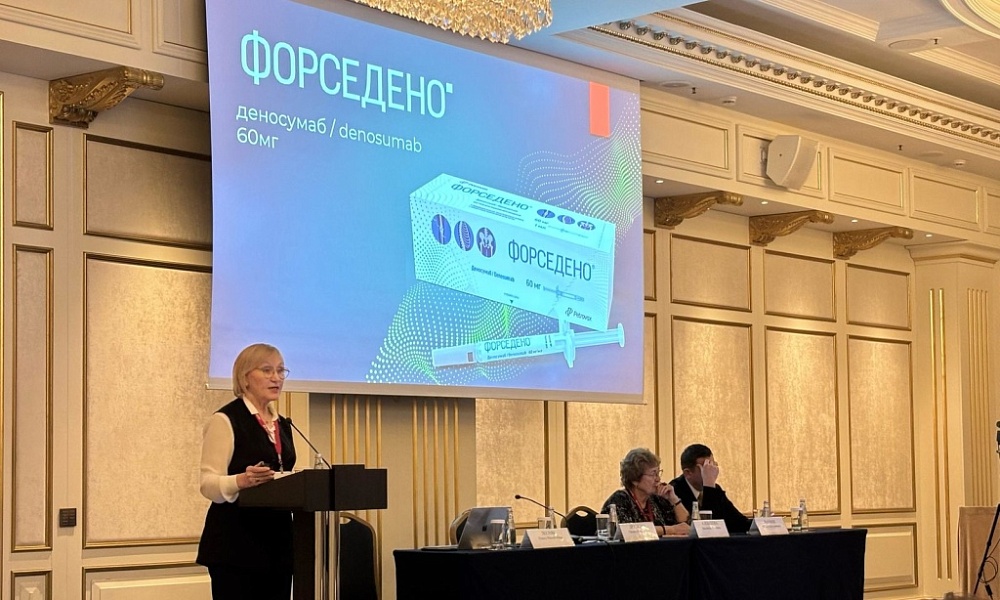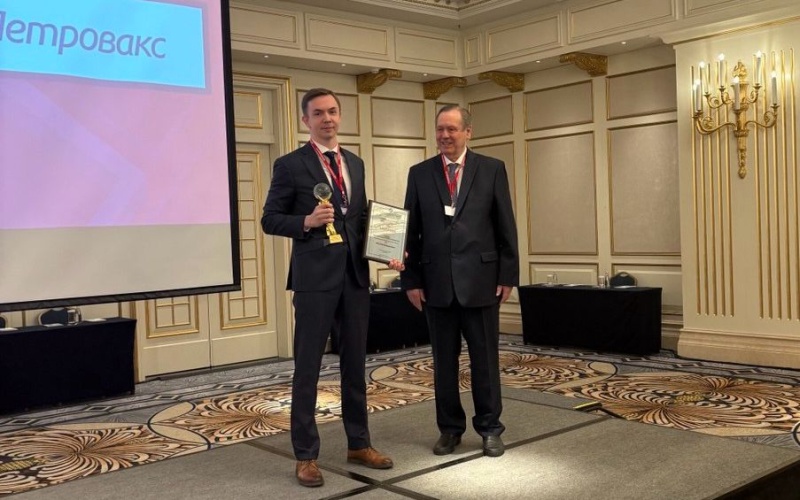
New stage in treating osteoporosis and osteoarthritis — state-of-the art therapeutic approach

One in three women and one in five men after the age of 50 face fractures due to brittle bones[1]. Osteoporosis and osteoarthritis are serious threats to active longevity that affect the mobility, health and quality of life of the elderly. Leading experts gathered at the Man and Medicine congress to present the latest advances in diagnostic and therapeutic options used to treat these diseases at the symposium "Clinical Aspects of Osteoporosis and Osteoarthritis".
An aging population and rising life expectancy usually mean increased susceptibility to chronic conditions, including age-related diseases such as osteoporosis and osteoarthritis. The insidious nature of these conditions lies in their complex clinical presentation, especially in patients with comorbidities. Often occurring alongside other illnesses, they require physicians to make timely diagnoses and select therapies that are both effective and safe.
Osteoporosis is a metabolic disorder that leads to decreased bone density and, consequently, a high risk of fractures. Often, the disease remains asymptomatic until the first fracture occurs.
The so-called low-energy fractures —those that occur, for example, from a fall at standing height—are particularly dangerous. One of the most severe and frequent injuries is a femoral neck fracture, which carries a high risk of re-fracture and disability in the first few years following the injury.
emphasizes Professor Olga Lesnyak, Dr. habil. med., President of the Russian Association on Osteoporosis. "Primary care specialists have the crucial task of preventing and detecting the disease as early as reasonably possible. People at high risk of fractures need to be identified before the first injury occurs."
Russian patients now have access to state-of-the-art diagnostic and therapeutic options for the treatment osteoporosis. The disease can be detected using densitometry and by assessing the 10-year risk of major osteoporotic fractures with the FRAX scale. Treatment includes a variety of therapies, including genetically engineered drugs.
One of the significant achievements in osteoporosis treatment options for patients in Russia is Forsedeno®, a biosimilar containing denosumab as its active ingredient. The drug secured its marketing authorization in April 2025.
Osteoarthritis is another common condition among the elderly, affecting about 7.6% of the global population[2]. While osteoporosis weakens bones, osteoarthritis affects the joints, leading to reduced mobility, chronic pain and a lower quality of life. Moreover, osteoarthritis can exacerbate the course of other chronic conditions[3].
This component is part of ArtNeo®, a complex designed to support articular cartilage and protect it from deterioration.
In people with osteoarthritis, the immune system can mistake body’s own collagen — released during joint damage — for a foreign substance. This misidentification triggers an immune response and leads to inflammation. Supplementing with native (undenatured) type II collagen appears to interrupt this process. Instead of provoking an immune response, it helps retrain the immune system not to react to the body’s own collagen. As a result, it reduces collagen breakdown in the joints and supports overall joint health.
Studies demonstrate[5] that the native form of collagen, in combination with boswellic acids, methylsulfonylmethane (MSM), vitamins D3 and C (as foiund in the ArtNeo® complex), significantly reduces the total WOMAC score, accelerates recovery and improves the quality of life compared to the traditional combination of chondroitin sulfate and glucosamine hydrochloride.
State-of-the-art treatment options for osteoporosis and osteoarthritis are designed not only to eliminate symptoms but also to preserve physical activity and improve the long-term quality of life for patients. Experts agree that new diagnostic algorithms and therapeutic solutions will significantly improve the prognosis for elderly patients and support active longevity in line with rising life expectancy.
1https://www.renewal.ru/voprosy-zdorovya/osteoporoz/
2GBD 2021 Osteoarthritis Collaborators. “Global, regional, and national burden of osteoarthritis, 1990-2020 and projections to 2050: a systematic analysis for the Global Burden of Disease Study 2021.” The Lancet. Rheumatology vol. 5,9 e508-e522. 21 Aug. 2023, doi:10.1016/S2665-9913(23)00163-7
3Herrero-Beaumont, Gabriel et al. “Systemic osteoarthritis: the difficulty of categorically naming a continuous condition.” Aging clinical and experimental research vol. 36,1 45. 20 Feb. 2024, doi:10.1007/s40520-024-02714-w
4Liu, Xiaoqian et al. “Dietary supplements for treating osteoarthritis: a systematic review and meta-analysis.” British journal of sports medicine vol. 52,3 (2018): 167-175. doi:10.1136/bjsports-2016-097333
5Vadim Ivanovich Mazurov, Irina Borisovna Belyaeva, Evgeniy Aleksandrovich Trofimov, Irina Emmanuilovna Itskovich, Artem Leonidovich Burulev. Comparison of the efficacy of undenatured type II collagen, boswellic acids, methylsulfonylmethane, vitamins C and D3 combination and chondroitin sulfate and glucosamine hydrochloride combination in the therapy of primary knee joint osteoarthritis.//Therapeutic Archive. 2023. No. 12.


